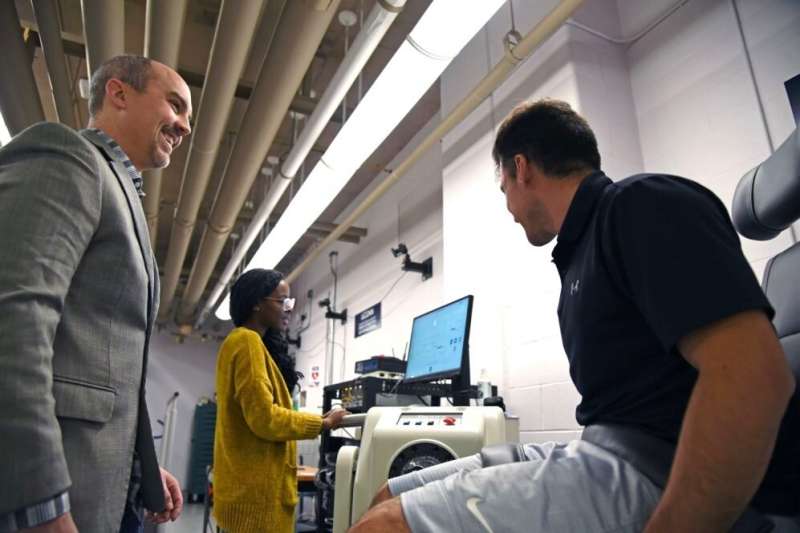This article has been reviewed according to Science X's editorial process and policies. Editors have highlighted the following attributes while ensuring the content's credibility:
fact-checked
peer-reviewed publication
trusted source
proofread
Tools for more accurate obesity risk assessment based on sex, ethnicity

For decades, health care practitioners have used body mass index (BMI) as an indicator of a person's health. But this equation only considers height and weight, and may not capture an accurate picture of a person's risk for obesity-related diseases, like heart disease, diabetes, and certain cancers.
Jacob Earp, assistant professor of kinesiology in the College of Agriculture, Health and Natural Resources, recently published papers in the International Journal of Environmental Research and Public Health and Nutrition, Metabolism and Cardiovascular Diseases that include a series of equations that add simple circumference measurements to better predict how a person's fat is distributed within their body and accounts for known differences in ethnicity and sex.
Scientists have known for years that having more adipose tissue, or fat, around the middle of your body, in the abdominal cavity is a greater health risk than having fat in other parts of the body.
"There is clear evidence that fat located in certain places, mainly in the visceral cavity, is really the fat that increases most of your metabolic risk," Earp says.
Additionally, fat distribution looks different between different ethnic populations and between women and men. This fact influences which interventions work best for different groups.
To generate their equations, Earp's team looked at data from 12,000 full-body DXA scans logged in the National Health Nutrition Examination Survey.
One significant finding was that Hispanic individuals are at a higher risk of poor fat distribution and its associated diseases.
Additionally, they found that men who are commonly classified as being either underweight or obese using BMI had unhealthier adipose tissue distribution than normally believed, and the opposite was true for women.
"On the high end, women still had higher abdominal fat in general because as that body mass index or waist circumference increases, abdominal adiposity increased, but we actually found that the distribution gets worse in men," Earp says. "For women, as they got to those higher levels of obesity, they were better able to distribute that fat in a healthier fashion."
Earp says he hopes these equations can serve as a tool for physicians and researchers who can input simple measurements of a patient's height, weight, and waist and hip circumference to get a sense of how that patient's fat is distributed based on their sex and ethnicity.
This will help physicians assess a patient's risk of obesity-related conditions more accurately than using BMI which may mislabel people and recommend inappropriate lifestyle interventions.
"It's our hope that these equations can be used to identify people who are misclassified based on BMI alone," Earp says.
For example, someone may have a high weight and be flagged as obese, but their weight is due to muscle and bone mass and their fat distribution is actually very healthy. By contrast, someone with a lower weight would not be labeled as at-risk but they may have high abdominal fat.
Earp's group is also working with recently obtained data from the UConn Center on Aging and the Pepper Center to study fat distribution within muscles. In this study they only looked at fat beneath the skin and stored in around the hips. But as people age, fat within muscle becomes a significant concern.
The next steps for this research are looking at how to adapt the equations to populations with chronic illnesses like diabetes and COPD which create atypical fat distribution.
"We know the obesity crisis is something we'll be facing for years to come. These tools help us better address a major health issue across a broad range of Americans," says Earp.
More information: Furong Xu et al, The Sex and Race/Ethnicity-Specific Relationships of Abdominal Fat Distribution and Anthropometric Indices in US Adults, International Journal of Environmental Research and Public Health (2022). DOI: 10.3390/ijerph192315521
Furong Xu et al, Sex and race/ethnicity specific reference predictive equations for abdominal adiposity indices using anthropometry in US adults, Nutrition, Metabolism and Cardiovascular Diseases (2023). DOI: 10.1016/j.numecd.2023.03.001




















